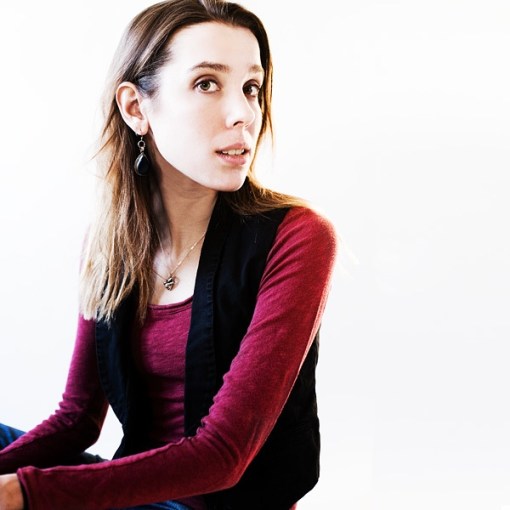Lifesize portrait, acrylic on 34 x 42 cardboard, freehand from photo reference.

First two slides: Practicing achieving a likeness. Not sure my “corrections” are better…maybe overcorrected. Will try again tomorrow, maybe split the difference.
My thanks to Bill Wadman at http://www.365portraits.com/ for permission to use his photo as practice reference.
3/6 update: I’m painting entirely freehand, just looking at the photo for reference…no enlarging, no grids. But I was curious which iteration I’ve done so far was more accurate, so I put everything in the computer and did some overlays. My conclusion is that I did indeed overcorrect. I’ll keep tweaking today. I think some good learning is going on.
3/6 evening: I did paint out and re-do a third time, splitting the difference, and I think it helped. May add a few final highlights and/or dark accents tomorrow. It’s my largest painting so far; lifesize figure on a 34 w x 42 h piece of corrugated cardboard that was throwing around the Watershed.
Literature about portraiture says a typical newbie mistake is to make all the features too large. In comparing my painting to the original photo I think I was too careful on this count; I made the features too small rather than too large, which in my opinion makes the subject look more mature. To me, iterations 1 and 2 look the right age for the subject, but they look perkier, more open than she does in the photo, as pointed out by a friend who came in my studio during iteration 2. I think I captured her more inward, slightly guarded expression in iteration 3, but in so doing aged her a few years vs iterations 1 and 2. Interesting how such seemingly minor adjustments have unforeseen effects…effects I can use on purpose in the future. (3/7 addendum: an artist friend had the opposite opinion about apparent age: he thought my portrait looked younger than the subject. Jackie thought the painting and photo look the same age. My first lessons in how subjective evaluating my work will be…)
One thing I liked right away about this subject is her sweeping jawline and the way it presents in the pose; my extra attention to this feature resulted in a bit of an exaggeration of that sweep, which I’ll chalk up to artist’s license.



This is awesome! all you work is great! Really enjoyed it.
Thanks Scott!
I am a beginner painter. I have been painting mainly with oil on canvas. I just got hold of two magnificent pieces of card board, and I though that I would like to use them. Then, I found your side. I just wish I could pain like you one day. It seem that you do your work on acrylic only, can I paint with oil too? Once again, I love your work, thank you for the information you provide. Sincerely, Marlene
Hi Marlene,
Thanks for your note!
If you use oil paint on bare cardboard, I think the oil might soak into the cardboard at the edges of the paint, leaving an oily ring. If it were me, I’d experiment on NON-magnificent cardboard to see what happens.
If you don’t mind losing a little of the raw cardboard look/feel, you could seal the surface first, then paint with oils. For the seal coat you could use a light coat of spray varnish, thinned down acrylic medium, thinned down varnish, or similar. Just experiment until you find a look you like. That’s the fun of painting on cardboard!
There are some things I like about oils, but I’m skittish about the long term health consequences of using them, so I decided to use acrylics exclusively. Sometimes I miss oils, but now I’m so used to the quick drying time of acrylics that I think oils would drive me nuts! (er, nuttier…)
Good luck!